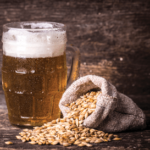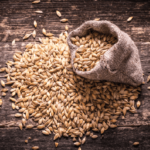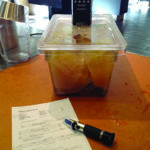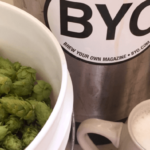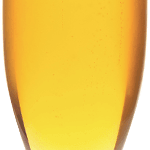Articles
Micro Maltsters Roundtable
If you want to make a truly local beer, try sourcing locally-made malt. Four pros discuss craft malting.
Debittered Black Malt
Like dark beers, but not the bitter astringency that sometimes comes with dark grains? Don’t be bitter, debitter — by using debittered black malt, a dark malt with the husk reduced. Plus: clone recipes for Dragon Stout, Klosterbrauerie Ettaler Curator Doppelbock, Schneider Aventinus and St. Bernardus Abt 12 (60th Anniversary Edition) .
Tracking Sugar Content of a Cider and Kettle Sours: Mr Wizard
It is the lack of non-fermentable sugars that make dry ciders attractive to carbohydrate watchers.
Brewing for Flavor: Malt
Every time you order a beer, you have certain expectations. Picture yourself perusing the beer menu at a new brewpub. Stout, porter, amber ale, pale ale, weizen, lager. Each of those names
A Beer Named Sous
Culinary students in a homebrewing club make beer using the sous vide cooking method.
Avoiding the Harsh Zone
Beer brewing is an art, and not just a technical exercise, as my friend Randy Mosher is fond of reminding me. Many of you know Randy as the author of great books
Just Fine!
If you have a batch of beer that just won’t clear, all is not lost. Use one of these fining agents.
Fining Homebrew
“Finings” is brewer speak for flocculants that are used in brewing to clarify suspensions of solids in a liquid, such as trub in wort and yeast in beer. Such solids remain suspended
Taking Control of Specific Gravity
Specific gravity affects many aspects of your homebrew, including its alcohol content, sweetness, and mouthfeel. Keep track of a few numbers while brewing to make the best beer possible.
Triticale Malt
How does a brewer decide to try a new ingredient to make beer? I asked this question when I met Brian Mandeville, Head Brewer at Fullsteam Brewery in Durham, North Carolina, to
The Big Chill
For the vast majority of consumers, “lager” is synonymous with “beer” — after all, all the mass-market favorites are lagers. Advanced consumers might recognize that most beer can be categorized as either an
The Big Stink
Tasting a new brew is like solving a mystery. Color relates to grist bill and then to flavor. Foam and bubble formation are the product of carbonation. Aroma is a function of
